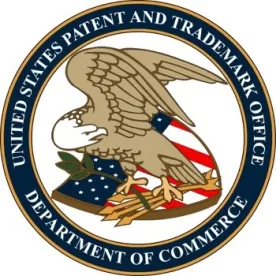In his keynote address at the Intellectual Property Owners Association Annual Meeting, USPTO Director Iancu revealed that the USPTO is working on revised patent eligibility guidelines he hopes will help keep patent eligibility issues and conditions-for-patentability issues “in their own distinct lanes.” While that goal sounds like a good one, we all know the devil will be in the details. According to Director Iancu, it could be several months before those have been worked out enough to be fit for public consumption.
Director Iancu’s Remarks
The premise of Director Iancu’s position is that there should be a strong line between “categories of invention on one hand” and “conditions for patentability on the other.” According to Director Iancu, § 101 “is meant to address categories of matter that are not ever eligible on their own, no matter how inventive or well-claimed they are.” He explained:
If the claims can be fixed by slightly different claiming, by narrower claiming, or by more definite claiming, this is likely a “conditions” problem—not a subject matter problem.
Director Iancu explained that the proposed new guidance will “categorize the exceptions [to eligibility] based on a synthesis of the case law to date” and only if a claim recites a categorized exception, would examiners need “to decide if [the claim] is ‘directed to’ that exception by determining whether such exception is integrated into a practical application.” According to the Director, “[t]hese two clarifications would help drive more predictability back into the analysis while remaining true to the case law that gave rise to these judicial exceptions in the first place.”
With regard to the categories of exceptions, Director Iancu invoked Supreme Court guidance that the “basic tools of scientific and technological work” cannot be patented. He further defined these as:
- “pure discoveries of nature, such as gravity, electromagnetism, DNA, etc.” (citing Myriad)
- “fundamental mathematics like calculus, geometry, or arithmetic per se. (citing Benson)
- “basic ‘methods of organizing human activity,’ such as fundamental economic practices like market hedging and escrow transactions.” (citing Bilski and Alice)
- “pure mental processes such as forming a judgment or observation.”
Of these, the Director is most concerned with eligibility issues surrounding so-called abstract ideas, and in particular with identifying when a claim recites or is “directed to” an abstract idea. To address this problem, the proposed new guidance would identify three categories of abstract ideas:
- “Mathematical concepts like mathematical relationships, formulas, and calculations”
- “Certain methods of organizing human interactions, such as fundamental economic practices commercial and legal interactions; managing relationships or interactions between people; and advertising, marketing, and sales activities”
- “Mental processes, which are concepts performed in the human mind, such as forming an observation, evaluation, judgment, or opinion.”
The New Step 1B
Under the proposed new guidance, once a claim is determined to recite a “process, machine, manufacture, or composition of matter” as required by the statutory language of §101 (USPTO Step 1), an examiner would determine if the claims recite subject matter within one of the enumerated categories of exceptions. According to the Director, “This is the new approach.”
If the claims do not recite subject matter falling into one of these categories, then the 101 analysis is essentially concluded and the claim is eligible.
The New Step 2A
Under the proposed new guidance, if the claims are determined to recite subject matter in one of the excluded categories, an examiner would determine whether the claims are “directed to” subject matter in one of those categories. On this point, Director Iancu stated:
The proposed new guidance would explain that Supreme Court jurisprudence taken together effectively allows claims that include otherwise excluded matter as long as that matter is integrated into a practical application.
Thus, “if the claim integrates the exception into a practical application, then the claim is not ‘directed to’ the prohibited matter,” and “the claim passes 101.” Importantly, Director Iancu stated that “it does not matter if the ‘integration’ steps are arguably ‘conventional’; as long as the integration is into a practical application, then the 101 analysis is concluded.”
Preserving Step 2B
The proposed new guidance would preserve Step 2B, as recently clarified in the Berkheimer memo. However, the Director emphasized that none of the previous steps “include questions about ‘conventionality.'”
I heard Director Iancu’s remarks in person–and am speaking on §101 issues at the IPO Annual Meeting today–but you can read them in full here.
Those Devilish Details
Navigating current patent eligibility jurisprudence can be difficult at best–and arbitrary at worst–and it is clear that Congress is not going to legislate in this area any time soon. Because of that–and because the USPTO is constrained by Supreme Court and Federal Circuit decisions–there is only so much the USTPO can do. Once the proposed new guidance is published and we can see the details, we will be better able to tell if and how they will impact examination.
Director Iancu said that he has “less difficulty with understanding the categories for laws of nature and natural phenomena.” but I want to know if diagnosing a specific subject as having a specific disease is a “practical application” of the discovery of the underlying natural phenomenon, or if it takes a treatment step to “practically apply” that “inventive concept.” Is formulating an isolated naturally-occurring protein in a solution for injection a “practical application” of the discovery of the natural product and its therapeutic usefulness, or do only method claims “practically apply” that invention?




 />i
/>i
